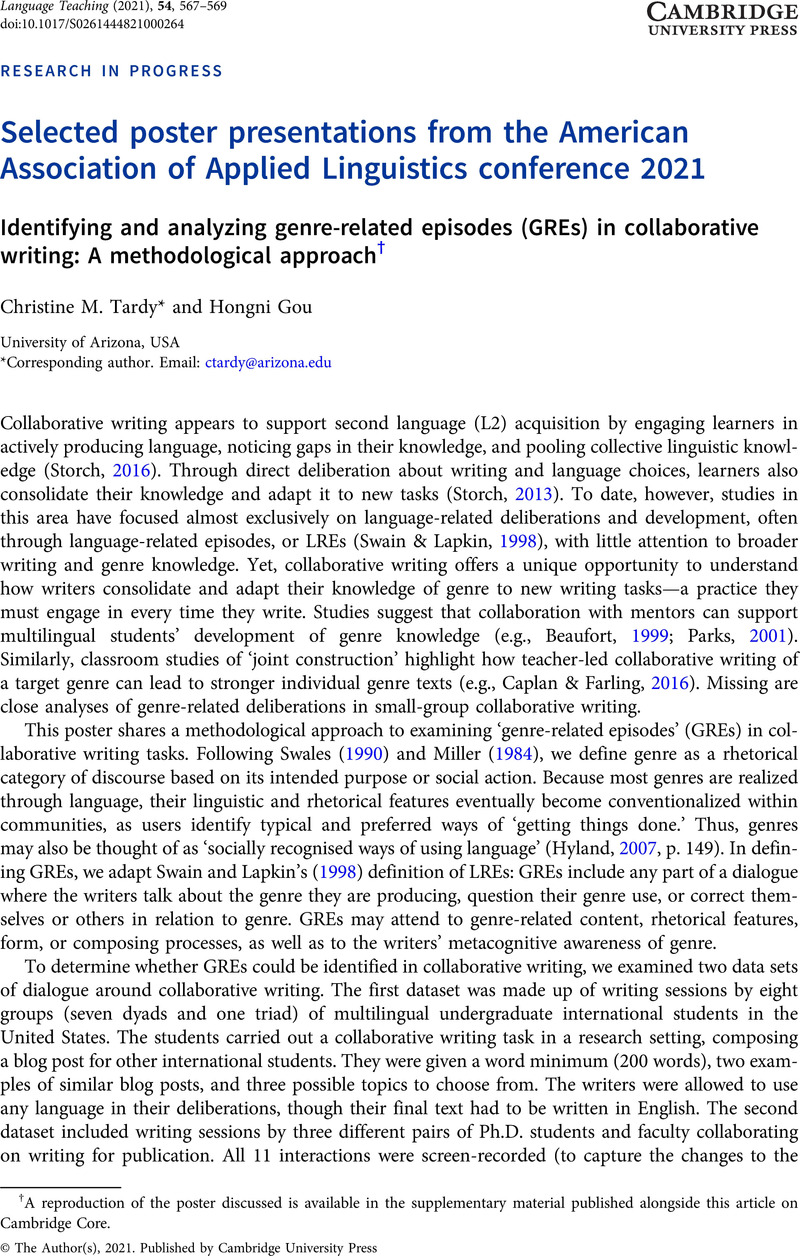Crossref Citations
This article has been cited by the following publications. This list is generated based on data provided by
Crossref.
Zainal, Azlin Zaiti
and
Fan, Ma Fei
2022.
ESL Learners' Processes and Perceptions of Using Google Docs in Collaborative Academic Writing.
International Journal of Computer-Assisted Language Learning and Teaching,
Vol. 12,
Issue. 4,
p.
1.
Hakim, Angela
2023.
Genre-related episodes: A tutorial for L2 writing teachers.
Research Methods in Applied Linguistics,
Vol. 2,
Issue. 3,
p.
100071.
Hakim, Angela
2023.
Genre-related episodes as a lens on students’ emerging genre knowledge: Implications for genre-based writing pedagogy, collaborative tasks, and learning materials.
Journal of Second Language Writing,
Vol. 60,
Issue. ,
p.
101001.
Zhang, Meixiu
and
Li, Mimi
2023.
Collaborative reading for writing: an innovative task in academic settings.
Computer Assisted Language Learning,
p.
1.
McGrath, Lisa
and
Negretti, Raffaella
2023.
Introduction to the special issue: Innovation in L2 writing task design.
Journal of Second Language Writing,
Vol. 62,
Issue. ,
p.
101073.
Li, Mimi
and
Zhang, Meixiu
2023.
L2 Collaborative Writing in Diverse Learning Contexts.
Vol. 59,
Issue. ,
p.
1.
Zhang, Meixiu
and
Li, Mimi
2023.
L2 Collaborative Writing in Diverse Learning Contexts.
Vol. 59,
Issue. ,
p.
53.
Hakim, Angela
Xu, Wei
Fedewa, Kevin
Lo, WeiHsuan
Kessler, Matt
and
Tardy, Christine M.
2024.
Researching genre knowledge across languages and contexts.
Language Teaching,
p.
1.






